Teaching the way of the "ninja" in China
Updated: 2016-01-09 04:44
By ALYWIN CHEW in Shanghai(China Daily USA)
|
||||||||
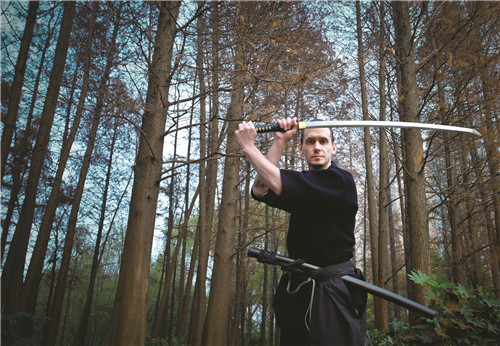 |
|
Ninjutsu instructor David Saignes has been teaching the martial art in Shanghai for about six years. Alywin chew / china daily |
People often associate ninjutsu with the archetypal ninja, often depicted in popular culture as a stealthy assassin who lurks in the shadows with a sword on his back. But attend just one lesson in this ancient Japanese martial art and it will soon be clear that many things found on the Internet or seen in popular culture are nothing more than misconstrued facts.
“Ninja gear? You mean like a black hood and a sword on the back?” said David Saignes. “My friend, this is not Hollywood!”
A ninjutsu instructor in Shanghai, Saignes holds the rank of fourth dan and conducts weekly classes at the dojo (training ground) on the second floor of the Xuhui Swimming Complex. The 33-year-old first arrived in the city in 2009 when he set up a landscaping design business. Surprised that there wasn’t a dojo in Shanghai at that time, Saignes trained by himself in parks. However, he soon discovered that winter in Shanghai can be particularly unforgiving, which made practicing outdoors really uncomfortable, and decided to find a proper space to practice.
In 2010, Saignes decided to set up Bujinkan Tako Dojo, the first in China at that time, and started offering classes in ninjutsu and budo taijutsu, which refers to samurai combat techniques. It’s hard to miss Saignes and his students. Dressed in black grabs, they inadvertently stand out from the taekwondo and mixed martial arts students who share the compound.
Although the Frenchman — who has 13 years of experience in the martial art — trains his students in the handling of weapons like wooden swords and spears, you won’t find them donning hoods, throwing shurikens, disappearing in a cloud of smoke and doing the sort of things ninjas are often depicted doing in popular fiction.
On the topic of ninjas, Saignes clarifies that ninjutsu students are simply called practitioners or students.
“The sort of ninjas we often see today are legends from kabuki, or popular theater. Actually, the word ‘ninja’ has been around since the 19th century. In Japan, there used to be these guys dressed in black who would change the landscapes at puppet shows and people used to call these workers kuroko, which means ‘black person’, before calling them ninjas. Somehow that term was used to described people who were involved in covert military activities,” said Saignes.
The history of ninjas is indeed fascinating. Historical records often refer to ninjas as mercenaries who were at times hired by samurais to conduct covert operations which were disallowed as the latter were bound to bushido, a code of honor. These masters of espionage and clandestine operations weren’t always clad in black hoods and outfits, too.
Historians discovered that ninjas only did so for the purpose of camouflage, usually to blend into the darkness of night when covert missions were carried out.
“These guys used to disguise themselves as peasants and monks too. Blending into the environment was critical,” shared Saignes.
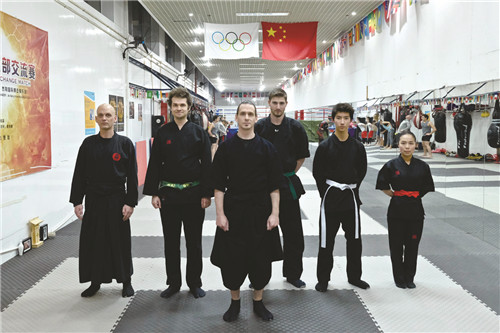 |
|
Ninjutsu instructor David Saignes has been teaching the martial art in Shanghai for about six years. Alywin chew / china daily |
Ninjutsu, in reality, is one of the martial arts that fall under the Bujinkan, an international organization based in Japan. There are nine schools of combat methods under the Bujinkan, three of which fall under ninjutsu, while the other six are categorized as budo taijutsu.
“Ninjutsu refers to specialized combat techniques. Think of a SWAT team in the police force,” said Saignes, who hails from Montpellier, France.
The origins of ninjutsu is unclear. Some sources claim that it originated from the mountain clans in Japan that were influenced by the philosophies of exiled generals from China during the Tang Dynasty (618-907). Others contend that it was a subset of samurai battle techniques, while some theorize that it could even have come from India.
Compared to its modern counterparts such as karate or judo, both of which boast millions of practitioners worldwide, ninjutsu would probably be considered a very niche discipline. According to Saignes, there are just over 400,000 Bujinkan members around the world.
Students begin warming up for class by performing a series of tumbles on the mat. They then perform a bow and say “shikin haramitsu daikomyo”, which according to Saignes means “to seek a bright future of enlightenment by loving, being true and persevering with dedication”.
Saignes then guides them through a series of manoeuvres in which they learn how to evade oncoming attacks before retaliating with a swift counter. Weapons training revolves around the same concept and one particular technique involves parrying with a sword before moving the blade along the assailant’s spear and slicing his guts open.
In this modern age, there is of course little need to be proficient in handling a sword, but it is nevertheless this aspect of ninjutsu, along with its mysterious nature, that proves alluring to many people.
“It’s all about observing people, seeing how exposed and vulnerable they are,” said Shelan Alexandre Daune, a 16-year-old student who is of French and Chinese parentage. “I love the biomechanics involved in this martial art.”
For Gu Jie, one of the few locals who had signed up, it is learning self defence techniques from a mysterious brand of martial arts that attracted him.
“My friends recommended that I pick up something to lose weight,” he said with a laugh. “I really like what I’m learning although some of the moves are a little hard to execute because I’m a little rotund. Besides, I also get to meet international peers.”
Everything is done at a cautious pace, because the focus is on mastering the techniques. The physical fitness that one derives from ninjutsu training is not so much from exercises like pushups or situps, but from the sort of discipline the martial art requires.
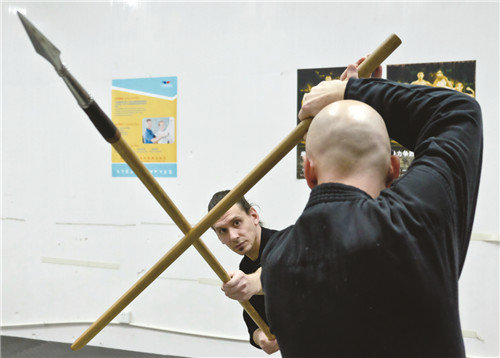 |
|
Ninjutsu instructor David Saignes has been teaching the martial art in Shanghai for about six years. Alywin chew / china daily |
“Ninjutsu requires us to control our alimentation, such as no alcohol, no smoking and no fast food. The dojo is like a laboratory where you practice but outside of it the training continues,” said Saignes.
He also notes that ninjutsu is not a sport, but the truest form of a martial art — traditionally, martial arts practitioners are required to use weapons. Also, unlike karate, judo or taekwondo, there are no ninjutsu competitions.
“Competitions would prostitute the spirit of ninjutsu, which is really to be in harmony with yourself and your senses. As mystical as it sounds, ninjutsu is really all about being yourself, and being happy,” he said.
Saignes has since been to Japan countless times over the years and has even met 84-year-old Grandmaster Masaaki Hatsumi on several occasions. He is planning to return to Noda in Japan’s Chiba prefecture next year to undergo a test to receive his fifth dan.
All Saignes needs to do is to avoid one strike of the sword by the examiner in order to pass, but it’s really not as simple as it sounds — the examiner is actually standing behind Saignes, who has no way of seeing where the strike will land.
“So this is what we learn, you can call it qi or ki. It’s like gaining an animal instinct. It’s all about feeling, not about thinking or anticipating,” said Saignes.
“The sensei can strike you anywhere — the top of your head or on your shoulders. You just have to sense the attack and dodge it with the proper technique. If he hits you, that’s it — you fail.”
For now, Saignes is looking to draw more students to his classes. He is optimistic that participation numbers will improve further as he believes that younger Chinese these days have demonstrated a penchant for the older martial arts such as taichi and wushu as it appears to be novel and interesting.
“If anything, I’m a white guy in China who teaches Japanese martial arts. It’s not a very logical thing, but maybe that’s why people sign up!” laughed Saignes.
- Obama says US must act on gun violence, defends new gun control rules
- Over 1 million refugees have fled to Europe by sea in 2015: UN
- Turbulence injures multiple Air Canada passengers, diverts flight
- NASA releases stunning images of our planet from space station
- US-led air strikes kill IS leaders linked to Paris attacks
- DPRK senior party official Kim Yang Gon killed in car accident

 Special report: Rise and rise of China's outbound tourism
Special report: Rise and rise of China's outbound tourism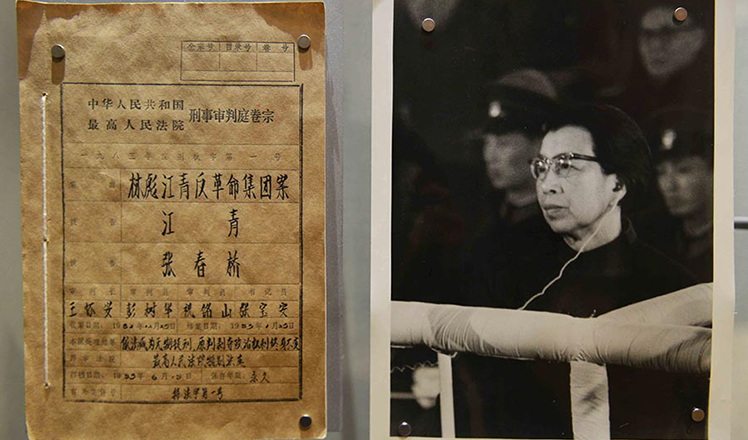
 Trial data of former senior Party officials on display
Trial data of former senior Party officials on display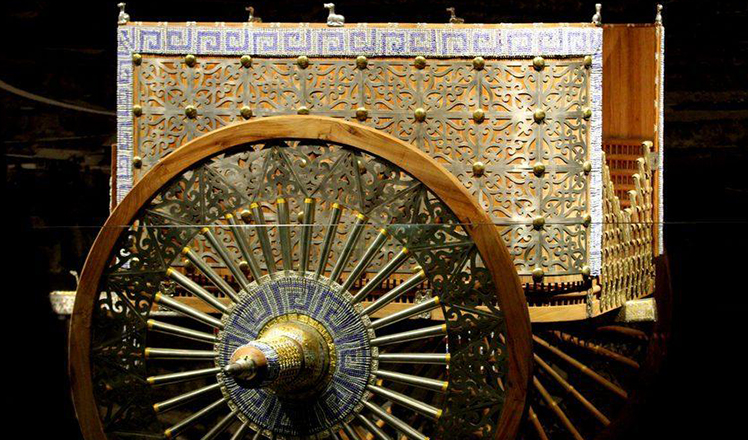
 Replica of luxurious chariot from ancient times wows Xi'an visitors
Replica of luxurious chariot from ancient times wows Xi'an visitors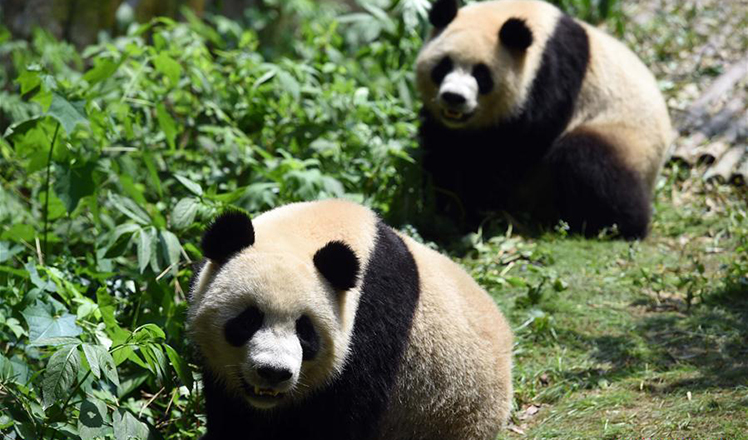
 Number of giant pandas in China reaches 422
Number of giant pandas in China reaches 422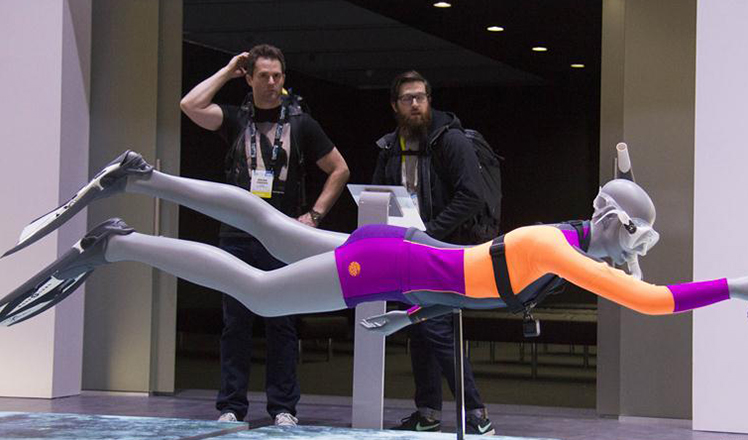
 Attendees feel the thrill of tech at CES trade show
Attendees feel the thrill of tech at CES trade show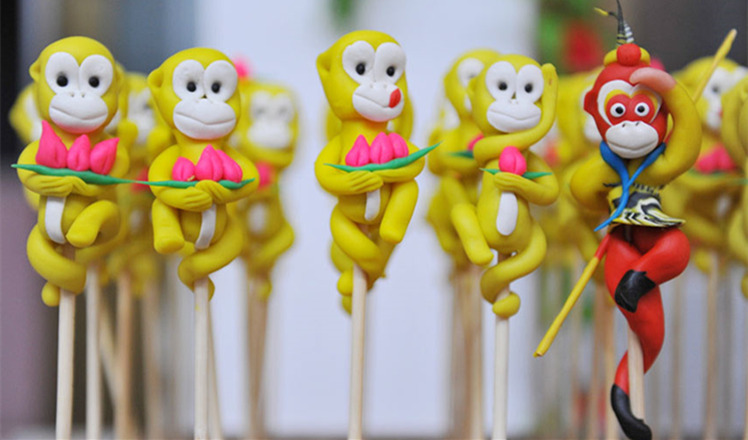
 Vivid dough sculptures welcome Year of the Monkey
Vivid dough sculptures welcome Year of the Monkey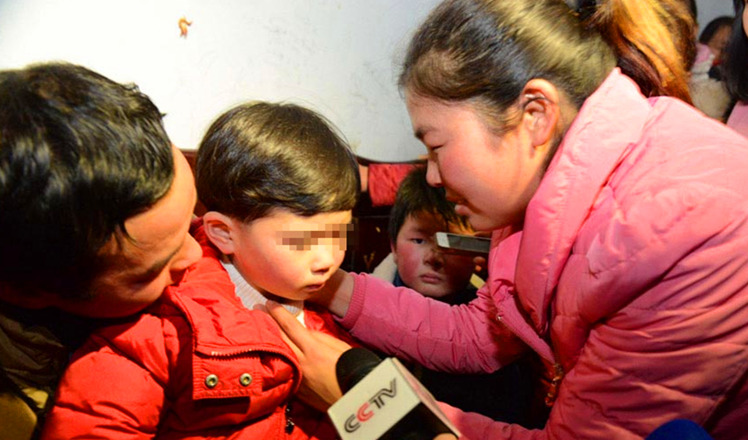
 Kidnapped five-year-old reunites with her family 56 hours later
Kidnapped five-year-old reunites with her family 56 hours later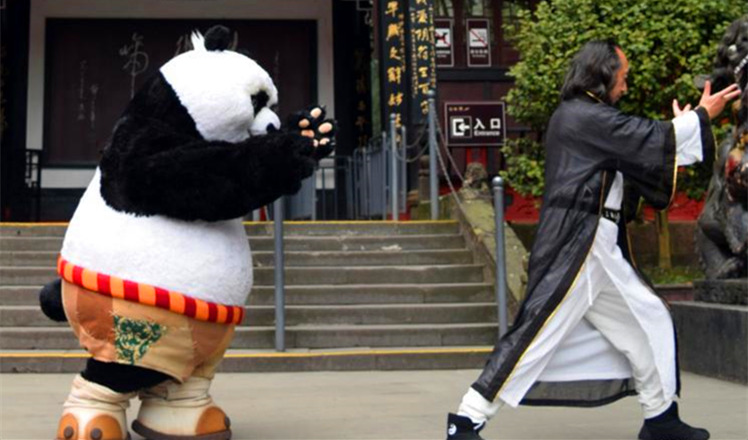
 Kung Fu Panda hones skills from master
Kung Fu Panda hones skills from master
Most Viewed
Editor's Picks

|

|

|

|

|

|
Today's Top News
Shooting rampage at US social services agency leaves 14 dead
Chinese bargain hunters are changing the retail game
Chinese president arrives in Turkey for G20 summit
Islamic State claims responsibility for Paris attacks
Obama, Netanyahu at White House seek to mend US-Israel ties
China, not Canada, is top US trade partner
Tu first Chinese to win Nobel Prize in Medicine
Huntsman says Sino-US relationship needs common goals
US Weekly

|

|








